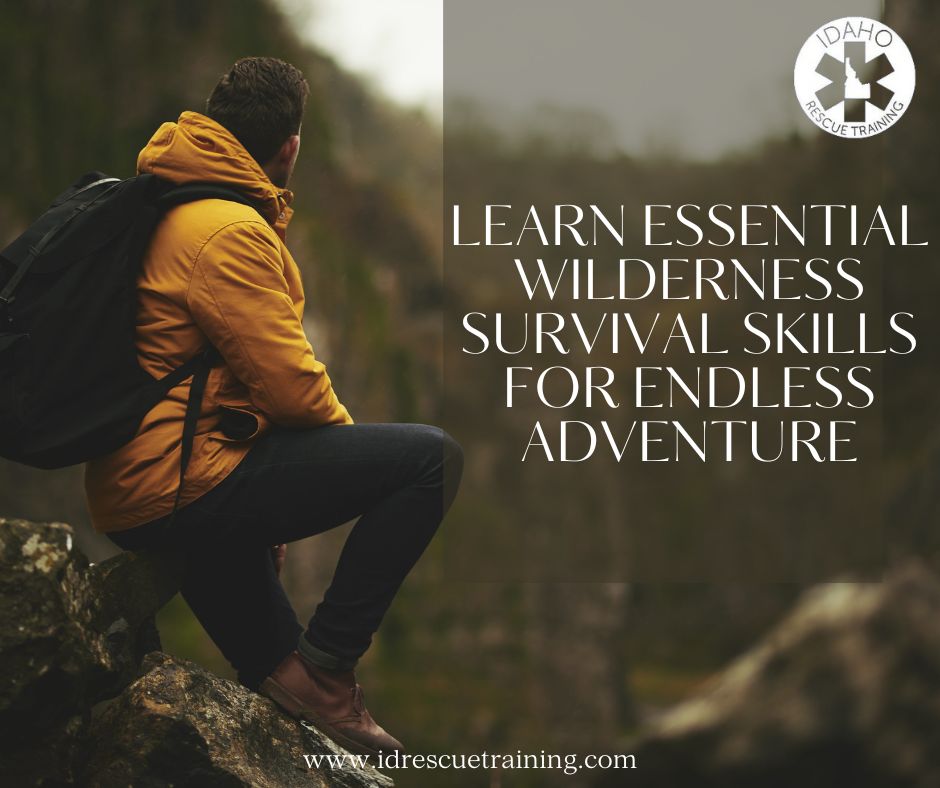
The call of the wild calls. Hiking through lush forests, conquering difficult mountains, or kayaking on peaceful lakes – adventure awaits people who seek both serenity and challenge from nature. However, there are inherent risks to exploring the environment. Sprains from uneven terrain, allergic responses to unexpected plants, or, worse, a potential medical issue can swiftly transform a dream vacation into a stressful situation.
Here’s where wilderness first aid training comes in.
Unlike standard first aid courses developed for urban settings, wilderness first aid provides you with the knowledge and abilities to tackle medical emergencies away from definitive medical care. Whether you’re an experienced traveler, a weekend hiker, or a camp counselor leading a group, wilderness first aid training can prepare you to respond effectively in an emergency, saving a life or greatly improving the result of an incident.
Why Take a Wilderness First Aid Course?
There are several compelling reasons to engage in wilderness first aid training:
- Peace of Mind: Knowing you can manage a medical emergency, no matter how remote the place, brings a great deal of peace of mind. You will be able to confidently explore the outdoors, knowing you are prepared for the unexpected.
- Increased Safety: Wilderness first aid training teaches you how to assess injuries and illnesses, stabilize patients, and administer basic care until help arrives. This can greatly enhance the result of an emergency.
- Enhanced confidence: Learning vital outdoor first aid procedures enhances your confidence when venturing into the backcountry. You’ll be able to handle unforeseen events with confidence and control.
- Become a valuable asset: If you’re part of a group going camping, having wilderness first aid certification makes you invaluable. Your abilities can distinguish between a slight inconvenience and a catastrophic problem.
What to Expect from a Wilderness First Aid Course?
Wilderness first aid courses range in length and severity, catering to various skill levels. Here’s an overview of what to expect:
- Comprehensive Curriculum: The course curriculum often covers a wide range of wilderness emergency-related topics, including patient evaluation, wound care, fracture splinting, burn management, coping with environmental crises (hypothermia, heatstroke), and performing CPR.
- Hands-on Learning: Wilderness first aid courses emphasize hands-on learning. They strongly emphasize developing practical skills through interactive scenarios and simulations. Students will gain hands-on experience applying bandages, splinting limbs, and performing CPR skills.
- Resource Management: The course will cover resource management in remote places. You’ll learn how to make medical supplies from widely available materials and prioritize patient care with minimal resources.
- Decision-Making Skills: Wilderness first aid training focuses on critical thinking and decision-making in stressful conditions. You’ll learn how to assess the situation, prioritize requirements, and choose the best evacuation or on-site care plan.
Selecting the Right Wilderness First Aid Course
With so many outdoor first aid courses available, choosing the best one for your needs is critical. Here are some things to consider:
- Certification Levels: Courses offer a variety of certification levels to accommodate different levels of experience. The most frequent entry-level course, Wilderness First Aid (WFA), teaches core skills. Wilderness Advanced First Aid (WAFA) expands on WFA, providing in-depth training for more difficult circumstances. Wilderness First Responder (WFR) is the most thorough choice, as it trains you to handle prolonged care scenarios in remote locations.
- Course Duration: WFA courses are typically shorter, lasting 16-20 hours. Depending on the supplier, WAFA and WFR Recert courses can range from 40 to 80 hours. Consider how much time you can reasonably commit to.
- Location and Training Style: Courses are delivered in various places and forms. Choose a convenient location and decide if an in-person, online, or blended format (a combination of online courses and in-person training) is appropriate for your learning style.
- Certification Validity: Most wilderness first aid certifications expire after two or three years. Make sure the course you chose has recertification options.
Wilderness First Aid: Beyond Yourself
While wilderness first aid training prepares you to deal with personal situations, your abilities can also be a significant asset to your fellow adventurers:
- Be a Responsible Group Member: Having wilderness first aid certification qualifies you as a more responsible group member. Your knowledge and abilities can help ensure your group’s safety and well-being during outdoor outings.
- Lead by example: Your preparation may inspire others to pursue wilderness first aid training, resulting in a ripple effect of safety awareness across your community.
- Offer Assistance to Others: Even with rudimentary wilderness first aid training, you can provide critical initial care in an emergency, potentially stabilizing a patient until expert help arrives.
Remember that wilderness medicine course is more than just learning skills; it’s about instilling a sense of preparation and responsibility. It’s about going outside confidently, knowing you have the information and resources to handle unforeseen events and create a safer, more enjoyable experience for yourself and the people around you.
So, take the risk, invest in wilderness first aid training, and set out on your next adventure with the confidence that comes from knowing you’re prepared for everything the wild may throw at you.







This is great work. Excellent linking sir. Website looks good.
[…] The call of the wild calls. Hiking through lush forests, conquering difficult mountains, or kayaking on peaceful lakes – adventure awaits people who seek both serenity and challenge from nature. However, there are inherent risks to exploring the environment. Sprains from uneven terrain, allergic responses to unexpected plants, or, worse, a potential medical issue can […] […]
why not try this out free fortnite skins